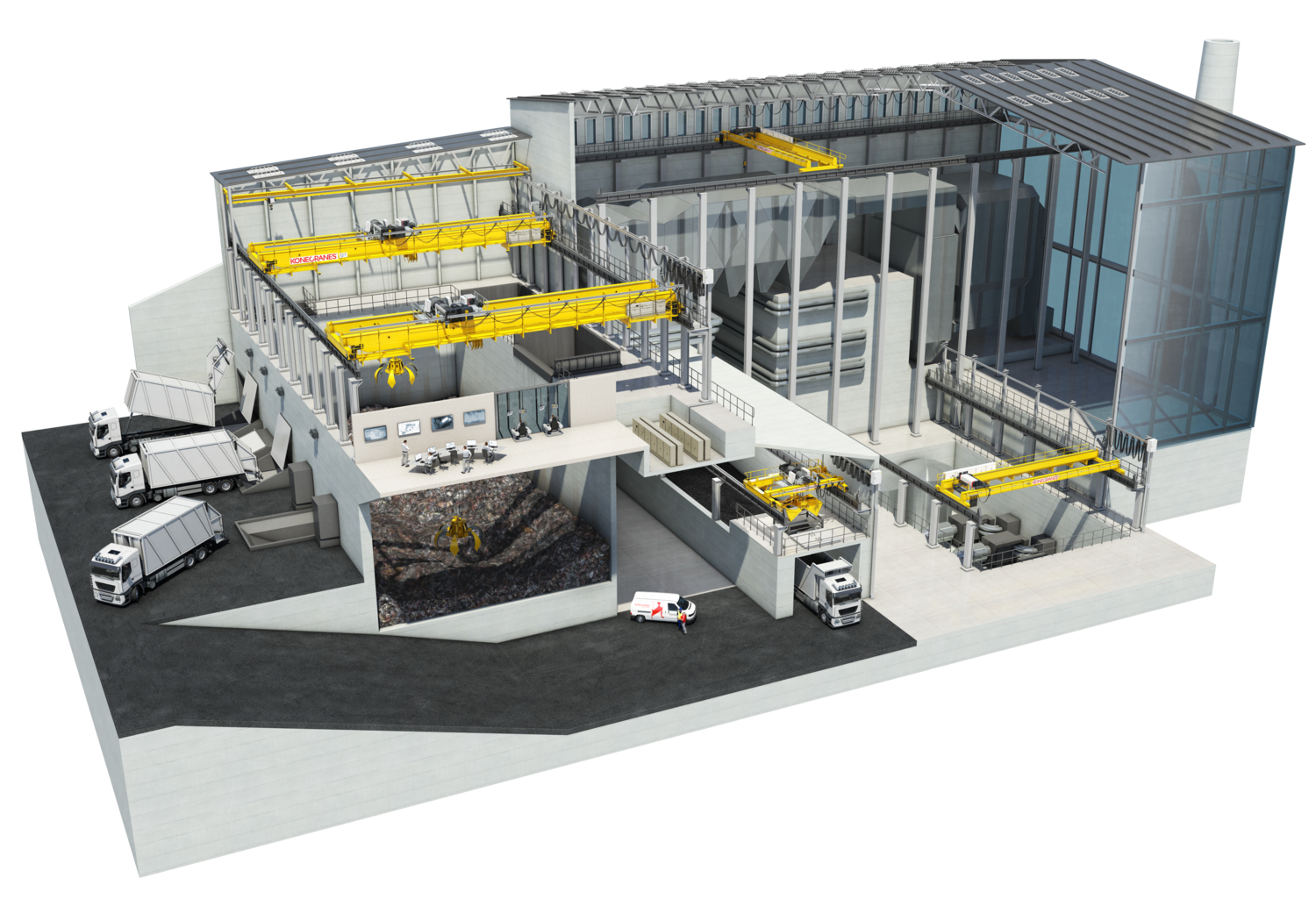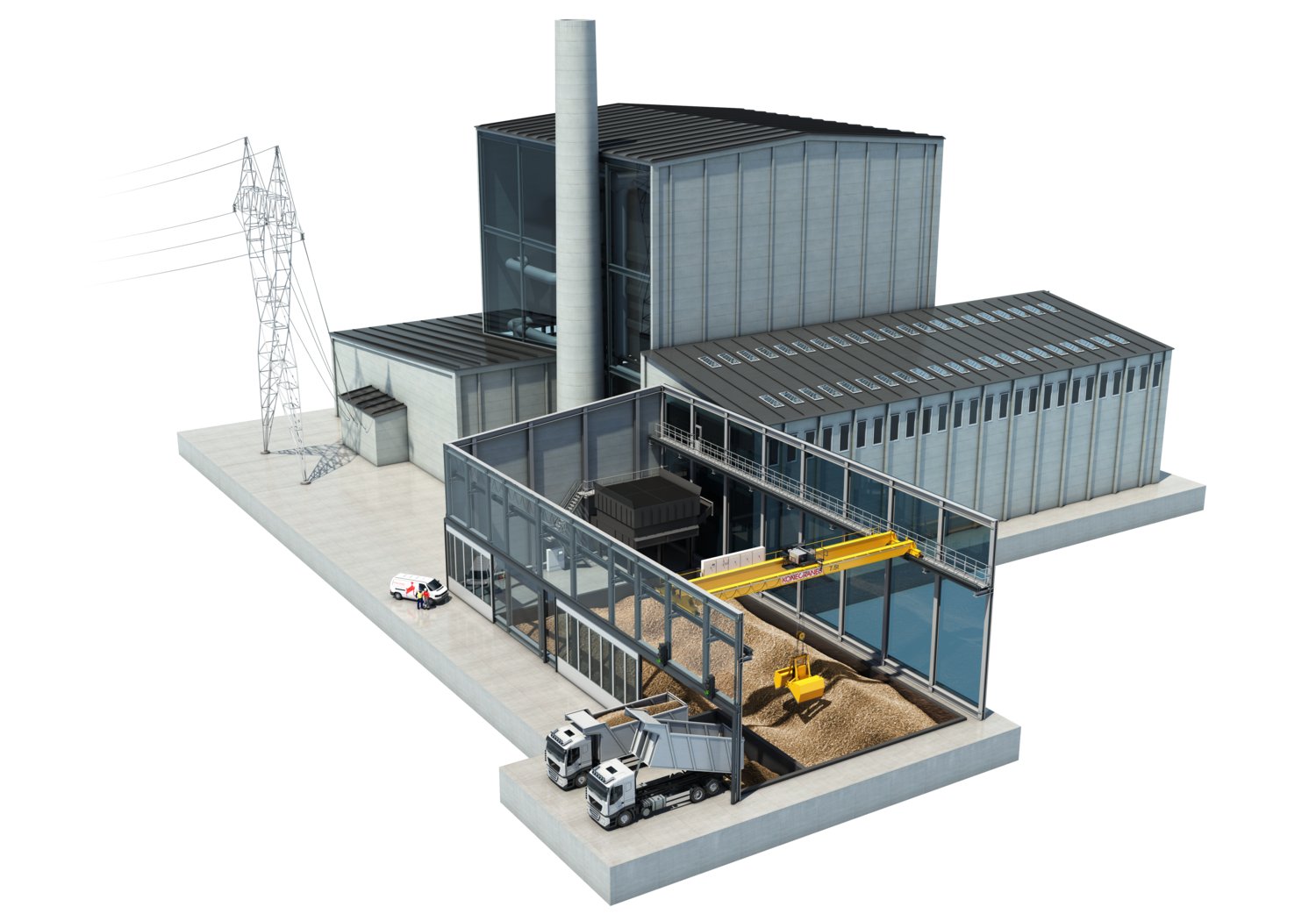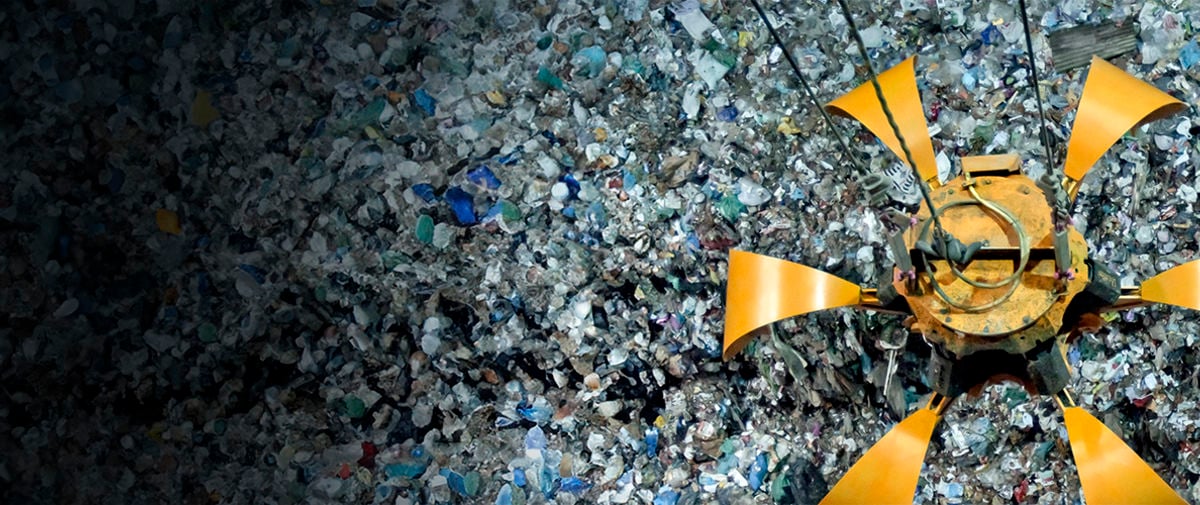Waste to energy processes
 Cranes play a crucial role in modern incineration plants, where tight environmental management guidelines are applied. It is important that material-handling systems continuously perform at maximum efficiency from the arrival of waste to separation to incineration.
Cranes play a crucial role in modern incineration plants, where tight environmental management guidelines are applied. It is important that material-handling systems continuously perform at maximum efficiency from the arrival of waste to separation to incineration.
Typically, there are two waste-handling cranes above the waste pit, one of which is a backup. The primary crane undertakes the main operating functions while the other is being serviced. The waste-handling crane stacks and mixes waste in a bunker and loads it into a feeding hopper.
The slag-handling crane loads slag into disposal trucks. A turbine hall crane can help manipulate steam turbines as required, and a SMARTON® crane, jib crane or another more conventional crane or hoist can help perform maintenance activities.
If cranes stop, the process is crippled, and production stops. The key factors when specifying waste-to energy lifting needs are the total burning capacity of a facility’s incinerators, the layout of handling areas, the type of waste being processed and total waste receiving and processing time.
Biomass processes
 In biomass energy plants, biomass-handling cranes automatically start the working cycle to transfer the material from the reception pocket to the adjacent storage. Likewise, the crane automatically starts the working cycle to fill the hopper from the storage after the reception of the command “fill the hopper” from the sensor of the hopper.
In biomass energy plants, biomass-handling cranes automatically start the working cycle to transfer the material from the reception pocket to the adjacent storage. Likewise, the crane automatically starts the working cycle to fill the hopper from the storage after the reception of the command “fill the hopper” from the sensor of the hopper.
Normally, only one unmanned, fully automated crane runs above biomass storage, moving the fuel from the reception area to storage, continuously feeding the combustion line. When there is only one crane feeding this process, maximum reliability is a top priority.

 Cranes play a crucial role in modern incineration plants, where tight environmental management guidelines are applied. It is important that material-handling systems continuously perform at maximum efficiency from the arrival of waste to separation to incineration.
Cranes play a crucial role in modern incineration plants, where tight environmental management guidelines are applied. It is important that material-handling systems continuously perform at maximum efficiency from the arrival of waste to separation to incineration. In biomass energy plants, biomass-handling cranes automatically start the working cycle to transfer the material from the reception pocket to the adjacent storage. Likewise, the crane automatically starts the working cycle to fill the hopper from the storage after the reception of the command “fill the hopper” from the sensor of the hopper.
In biomass energy plants, biomass-handling cranes automatically start the working cycle to transfer the material from the reception pocket to the adjacent storage. Likewise, the crane automatically starts the working cycle to fill the hopper from the storage after the reception of the command “fill the hopper” from the sensor of the hopper.